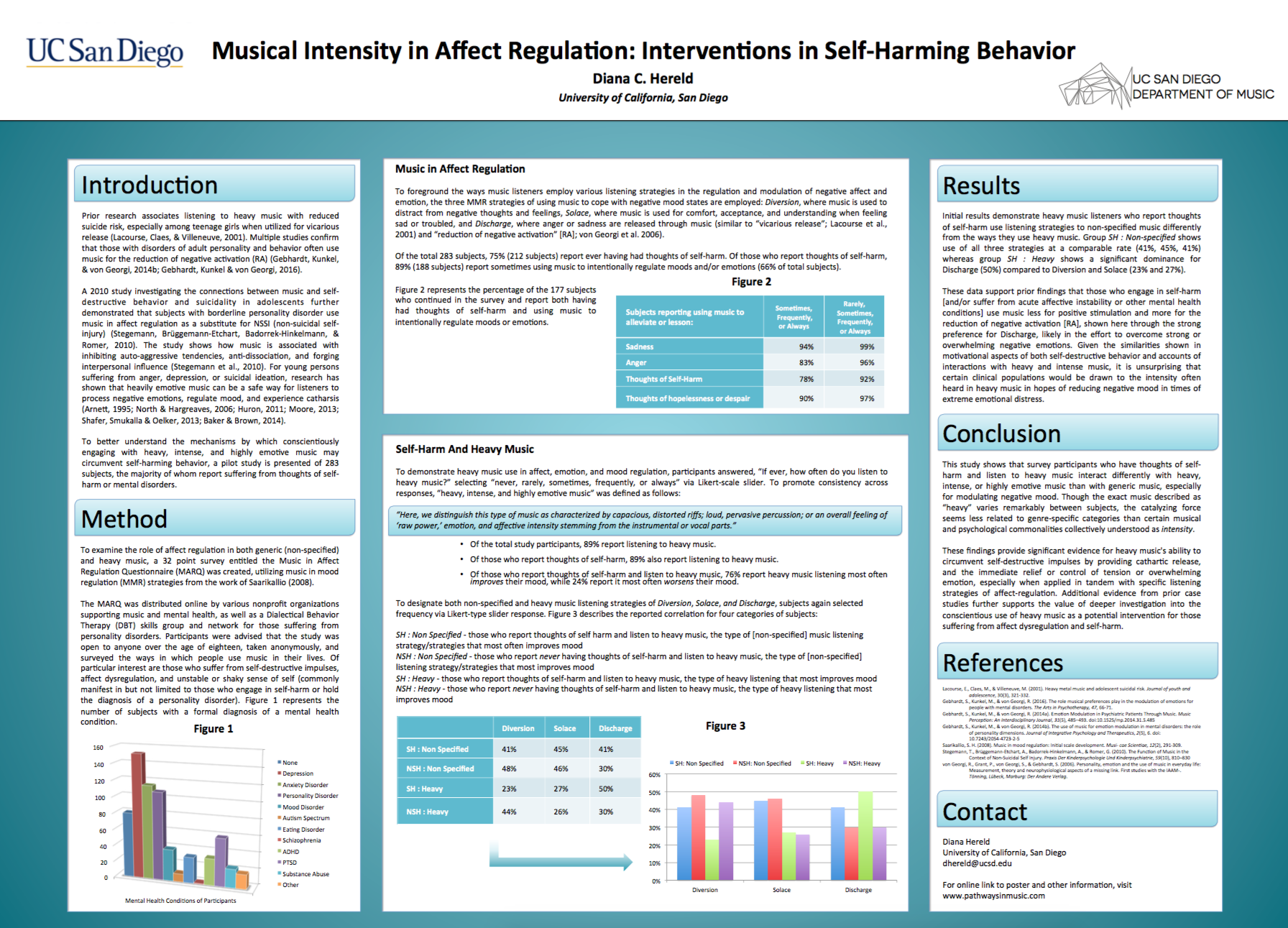Mental Illness 2015 Jun 18;7(1):5784
The change of music preferences following the onset of a mental disorder
Gebhardt S (1), von Georgi R (2)
1 Department of Psychiatry and Psychotherapy, University of Marburg, Germany; 2 Department of Music Science and Music Education, University of Giessen, Germany ; International Psychoanalytic University of Berlin, Germany
A psychiatric population (n=123) was examined on how music preferences had changed after the onset of a mental disorder. Most patients did not change their previous music preference; this group of patients considered music helpful for their mental state, showed more attractivity and enforcement as personality traits and used music more for emotion modulation. Patients who experienced a preference shift reported that music had impaired them during the time of illness; these patients showed less ego-strength, less confidence and less enforcement and used music less for arousal modulation. A third subgroup stopped listening to music completely after the onset of the mental disorder; these patients attribute less importance to music and also reported that music had impaired their mental state. They showed more ego-strength and used music less for emotion modulation. The results suggest that the use of music in everyday life can be helpful as an emotion modulation strategy. However, some patients might need instructions on how to use music in a functional way and not a dysfunctional one. Psychiatrists and psychotherapists as well as music therapists should be aware of emotion modulation strategies, subjective valence of music and personality traits of their patients. Due to the ubiquity of music, psychoeducative instructions on how to use music in everyday life plays an increasing role in the treatment of mental illness.
Versione Italiana
Una popolazione psichiatrica di 123 persone è stata esaminata per indagare il modo in cui le loro preferenze musicali sono cambiate dopo l’insorgenza della patologia mentale. La maggior parte dei pazienti considerava la musica di aiuto al proprio stato mentale, mostravano più tratti di personalità di attrattività e applicazione, usavano la musica soprattutto per la modulazione delle emozioni. I pazienti che sperimentavano un cambiamento delle preferenze riportavano che la musica li aveva in qualche modo toccati negativamente nel momento della malattia. Questi pazienti riportavano minore autostima e fiducia e usavano meno la musica per la modulazione delle emozioni. Il terzo gruppo riferiva di aver interrotto l’ascolto della musica dopo l’inizio della malattia mentale e attribuivano meno importanza alla musica che a loro avviso aveva influenzato negativamente lo stato mentale. I risultati suggeriscono che l’uso della musica nella vita di tutti i giorni possa essere utile come strategia di modulazione delle emozioni. In ogni caso, alcuni pazienti necessitano di essere indirizzati sul modo in cui devono usare la musica in un modo funzionale e non disfunzionale. Gli psichiatri e gli psicoterapisti così come i musicoterapisti dovrebbero essere informati circa le strategie di controllo e modulazione delle emozioni, della valenza soggettiva della musica e dei tratti della personalità dei loro pazienti. Dal momento che la musica è ubiquitaria, una guida psicoeducativa su come utilizzarla è sempre più necessaria per il trattamento delle patologie psichiatriche.
For full article, please visit NCBI online.
Gebhardt, S., & von Georgi, R. (2015). The Change of Music Preferences Following the Onset of a Mental Disorder. Mental Illness, 7(1), 5784. doi:10.4081/mi.2015.5784



You must be logged in to post a comment.